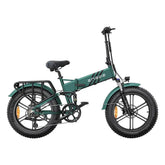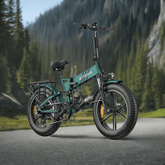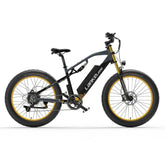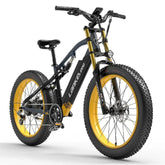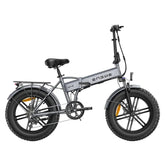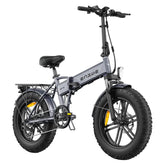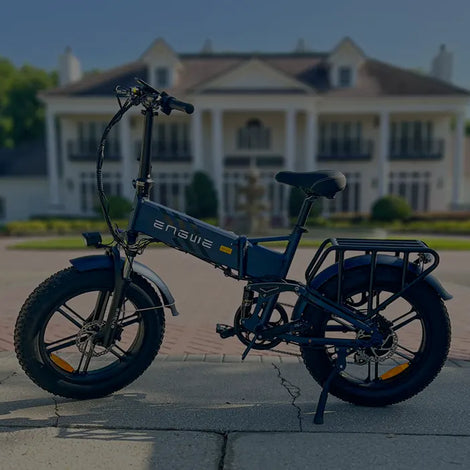Understanding how weather conditions influence the performance and longevity of electric bike. Maintaining tires is paramount for riders who aim to uphold their safety and extend the durability of their electric bike equipment. This all-encompassing guide delves into how temperature variations, precipitation, and road conditions influence electric bike tires. We'll also offer authoritative maintenance advice and insights on tire selection to keep your rides safe and your gear in top condition. Shengmilo electric bike remains dependable and efficient for years to come.
Temperature and Electric Bike Tires
Temperature fluctuations have a pronounced effect on e bike tire pressure, significantly altering the performance of your electric bike. When the mercury climbs, tire pressure intensifies due to the expansion of air within, while a drop in temperature leads to a contraction of air and a subsequent decrease in tire pressure.
These variations in tire pressure can drastically affect the riding experience, influencing tire traction and the handling of your electric bike. Tires that are overinflated may lead to skidding and a loss of traction. Conversely, tires that are not sufficiently inflated risk punctures and hamper riding efficiency.
Tips for Adjusting Bike Tires Pressure Based on Temperature Changes
To counteract the impact of temperature changes on e-bike tire pressure, it's crucial to consistently monitor and adjust to the ideal tire pressure. Prior to embarking on a ride, it's wise to check the tire pressure. Tailoring it to the current temperature conditions ensures optimal performance.
Recommended Tire Pressure Range for Different Temperature Conditions:
A reliable method for ascertaining the correct e-bike tire pressure is to consult the manufacturer's guidelines. Modify the pressure by adding or subtracting 1 PSI for every 10°F (5.6°C) shift in temperature. In the heat of summer, target the upper spectrum of the suggested pressure. In the chill of winter, the lower spectrum is more appropriate.
For instance, if the manufacturer recommends an e-bike tire pressure spectrum of 60 to 70 PSI and there's a 20°F (11°C) drop in temperature, it's advisable to decrease the pressure by around 2 PSI to compensate for the diminished air volume in the tires.
By fine-tuning tire pressure in response to temperature changes, riders can enhance their electric bike's tire traction and handling. This proactive approach not only boosts riding performance but also contributes to a safer and more comfortable journey.
Rainfall and Electric Bike Tires
Riding on wet roads significantly impacts the tire's grip and traction of electric bikes. When roads are wet, a thin layer of water creates a barrier between the tire and the road surface, reducing friction and grip. Moreover, rainfall contributes to slicker road conditions, further diminishing the tire's adhesion.
Shengmilo excels in crafting rain-resistant tires with a specialized tire tread pattern that ensures superior grip while cycling in rain. These robust fat tires boast deeper and broader grooves than those designed for dry conditions, promoting efficient water dispersion to prevent slippage and bolster traction. Additionally, the softer composition of rain tires allows them to mold to the road surface, further enhancing their grip.
When riding an e-bikeWhen riding on wet surfaces, adapting your style to accommodate the reduced grip is crucial. It's advisable to ride at a slower pace, steer clear of sudden stops or sharp turns to avert loss of control. Additionally, keep a generous distance from other vehicles due to increased stopping distances on wet roads.
Equipping your bike with well-inflated rain tires and adding fenders can significantly boost your safety in wet weather.
Snow and Ice Conditions
Snow and ice conditions present formidable challenges when riding motorcycles in snow, affecting grip, stability, and the overall performance of electric bike tires. Key strategies for navigating these conditions include opting for winter tires and adjusting your riding technique.
- Riding motorcycles in snow leads to reduced tire traction, as snow and ice on the road can result in potential loss of control and stability.
- Cycling in icy conditions requires attention to e-bike tyre pressure, as cold temperatures can cause the air inside the tires to contract, which may impact handling and risk tire damage.
- Tread Wear: Snow and ice can accelerate tire tread wear, diminishing performance and longevity.
Shengmilo's winter tires are meticulously engineered for peak performance in snowy and icy conditions. For optimal traction, it's recommended to choose tires with a pronounced tire tread pattern and soft rubber compounds, ensuring a firm grip on challenging snow and ice surfaces.
When cycling in icy conditions, it's crucial to adopt additional bike safety measures. These include reducing speed to enhance traction and maintaining proper tire inflation. To avoid the risks associated with abrupt stops and turns, consider the use of studded tires for superior grip on treacherous surfaces.
Sunlight Exposure and Electric Bike Tires
Exposure to UV rays can drastically reduce the lifespan and efficiency of electric bike tires. Tire wear accelerates due to photooxidation, a process where UV light breaks down the rubber compound, leading to increased wear and the emergence of cracks under high heat conditions.
Protecting your Shengmilo e-bike tires from the detrimental effects of UV rays is essential for prolonged tire care. Store them in a cool, shaded area when not in use, and apply a tire protector or an anti-UV coating to combat cracking and discoloration.
Shengmilo has engineered tires specifically for enduring the harshness of UV rays in hot and sunny climates, enhancing tire durability with UV-resistant rubber compounds. For added resilience, choose tires with additives for UV stability, thicker sidewalls, and deeper treads to prevent UV-induced cracking. Also, maintaining proper tire pressure is key to minimizing sun damage.
Humidity and Electric Bike Tires
The tire's grip can be significantly compromised by humid weather, as high humidity levels make road surfaces more slippery through moisture condensation. This reduction in grip heightens the risk of slipping for electric bike tires.
In humid weather, e-bike tire pressure may decline more swiftly due to atmospheric moisture permeating the rubber and causing it to expand and contract with temperature changes. This leads to a gradual loss of air pressure over time.
To ensure ideal tire pressure in humid weather, it's advisable to check and adjust your tire pressure regularly. Keeping your tires at the higher end of the recommended pressure range by the manufacturer will help maintain tire shape and optimal performance. Additionally, storing your electric bike in a dry, cool place can mitigate the impact of moisture on the tire's rubber.
Conclusion
Understanding how various weather elements affect electric bike tires is paramount for ensuring rider safety and promoting tire longevity.
High temperatures, humidity, rain, snow, and sunlight all have significant weather impacts on tire pressure, grip, and the durability of the tires. Selecting tires that can withstand specific weather conditions is crucial for safe and efficient riding. Maintaining the correct tire pressure is also essential. In summary, riders must be aware of these weather-related factors to mitigate risks and ensure optimal performance.
Recognizing weather challenges is crucial for Shengmilo e-bike enthusiasts to ride safely and maintain performance. Dedicated riders understand the importance of weather conditions on their journeys. We encourage sharing insights and experiences in the comments to foster discussion among fellow riders. This exchange helps everyone make informed decisions for an enhanced riding experience.

